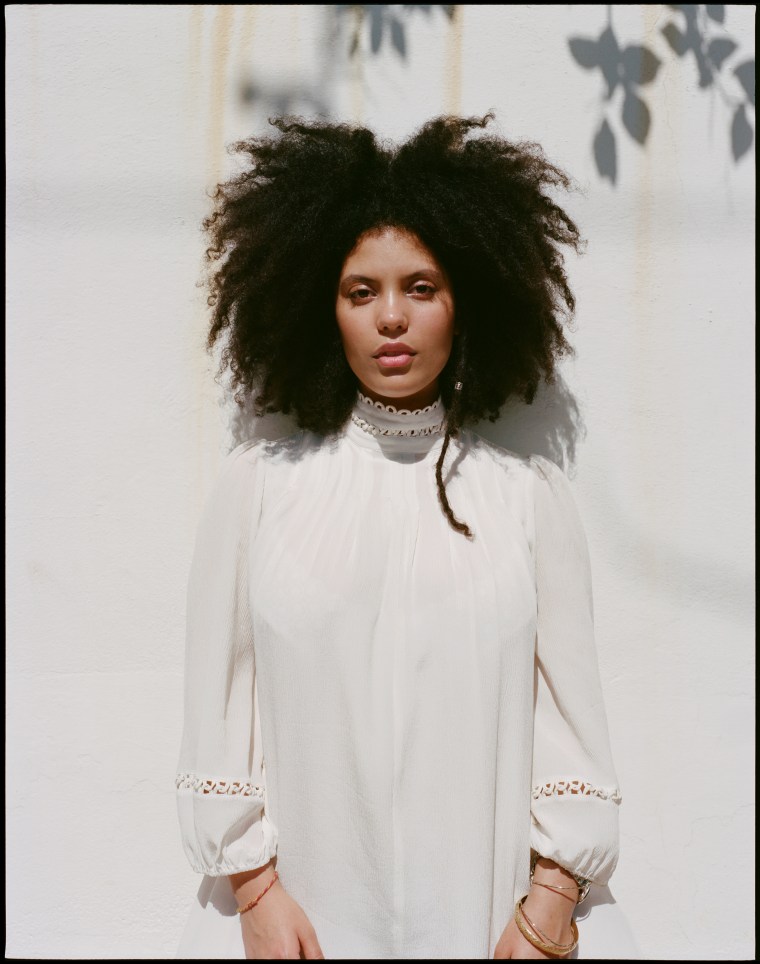 Dress APIECE APART
Dress APIECE APART
 Top APIECE APART, pants KES
Top APIECE APART, pants KES
There’s a house that’s slowly under construction at the end of a long, quiet street in western Havana. Urban development in the capital city is ramping up — in 2011, president Raúl Castro reversed a decades-long ban on Cubans buying and selling homes, and last year the U.S. scrapped its 60-year-long embargo — but this sculptural, light-filled, wood, glass, and concrete bungalow isn’t an entirely new structure, it’s a restoration.
The house is being worked on for twins Naomi and Lisa-Kaindé Diaz, of the French-Cuban electronic soul duo Ibeyi, and their mother and manager, Maya Dagnino. The whole building is white, which stands out in a city mottled with faded pastel facades. Inside, Lisa shows me bedrooms that are underway, pointing out raised, loft-style sleeping spaces and glass-walled bathrooms. “Naomi’s bedroom is by the front door,” Lisa says, “because she always comes home the latest.” In the garden, shrubbery partially obscures an outdoor shower for after trips to the beach — “Or when you come home late from a party,” says Naomi, laughing.
Across the street, there’s an imposing, sea-facing police panopticon and a massive, crumbling multi-building apartment complex, where, their mother Maya tells me, just five resident families are holding strong. It’s a short walk to a supermarket that, like the rest of Cuba, only carries non-perishables: stock is regulated by the government, not consumer preference, which is why, when I visit, there’s one whole aisle filled with orange soda and nothing else. But in the ’50s and ’60s, before the Revolution, this barrio was popping. Maya, who is intensely thoughtful and French-Venezuelan, says that for years she and her late husband, the famed Cuban conguero Anga Diaz, had wanted to live on this exact street. Nearby, on the rocky shoreline, locals discretely spear squid and offer prayers to the Yoruba gods.
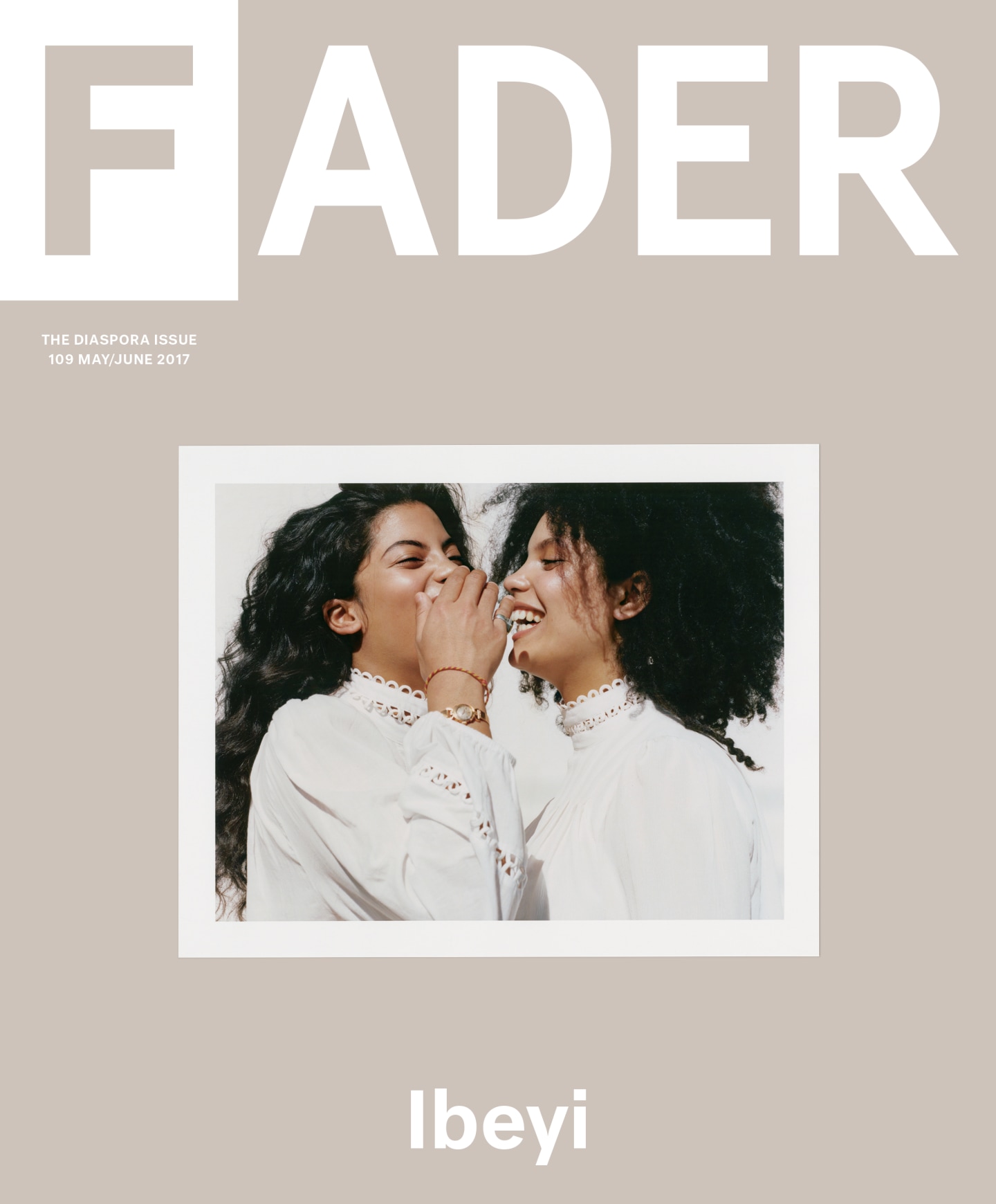 Lisa: Dress APIECE APART
Naomi: Top APIECE APART
Lisa: Dress APIECE APART
Naomi: Top APIECE APART
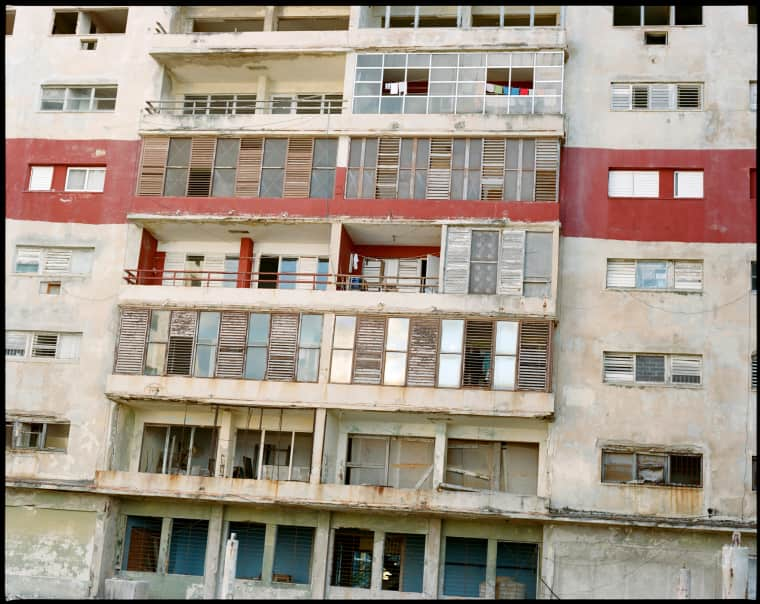
 Naomi: top OLIVIA VON HALLE, pants OPENING CEREMONY
Lisa: top OLIVIA VON HALLE, pants KES, avarcas PONS
Naomi: top OLIVIA VON HALLE, pants OPENING CEREMONY
Lisa: top OLIVIA VON HALLE, pants KES, avarcas PONS
“You can say whatever you want about Cuba. But the people here are amazing with each other.” — Naomi Diaz
Yoruba is a West African language and faith practice that, starting in the 16th century, was carried by enslaved peoples to the Americas. There, the religion was preserved under the guise of Catholic traditions throughout the Caribbean and Latin America. It remains prevalent in Cuba, where it’s called Santería. Ibeji is the word for twins in the original Yoruba, but in Cuba’s pidgin dialect, Lucumí, it’s ibeyi.
Born and raised in Paris and now 22, Naomi and Lisa are the least twinlike twins I’ve ever met. They tell me how their personalities align with their reigning Santería orishas, or patron saints. Lisa, who composes the songs and sings lead vocals, is the daughter of Yemaya, a calming, mother divine water goddess, while Naomi, who also sings and plays percussion, is the daughter of Changó, a roiling, masculine deity of thunder. Though Naomi was born first, she’s the youngest according to Yoruba tradition. The twinlore goes that Kaindé, or Kehinde, as it’s often spelled, nudges Taiwo, sometimes written as Taiye, out of the womb first to make sure the coast is clear.
Lisa has round, curious brown eyes and wears her hair in corona of afro. Naomi has a cat-eyed stare, and a looser, wavy curl pattern; if a band starts to play on the street or in a bar, she’s the first to rumba. Their fashion sense is different, too. Naomi will conspicuously stalk the streets of crumbling Old Havana wearing a silver grill on her bottom teeth and head-to-toe Nike; Lisa wears a white, three-quarter length button-down dress that belonged to their mom.
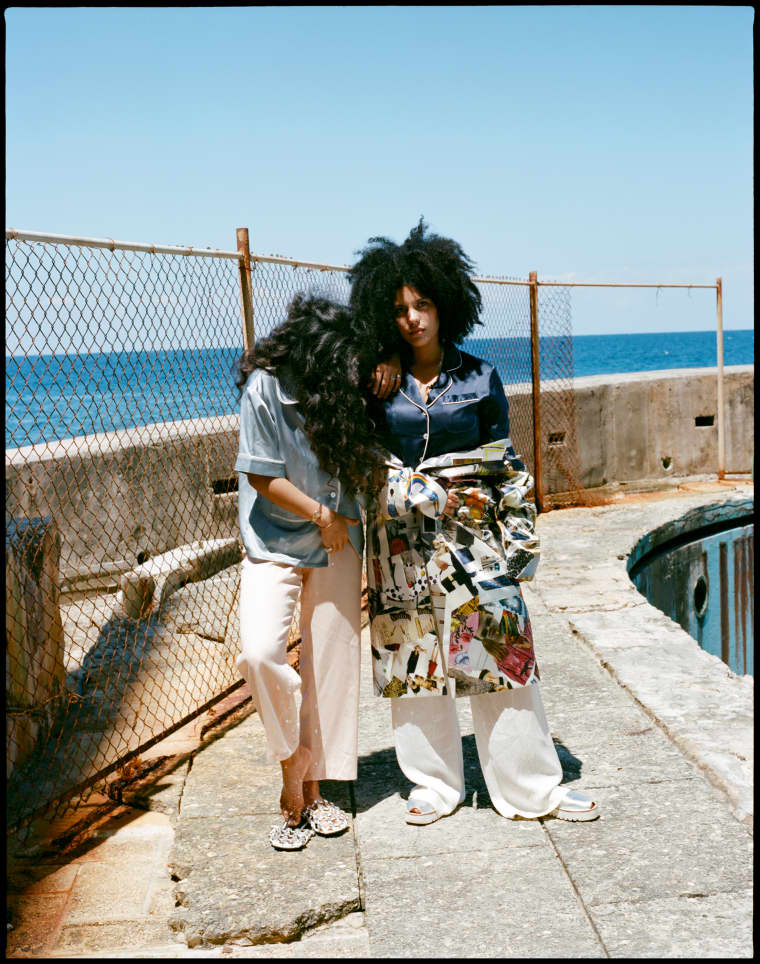 Naomi: top OLIVIA VON HALLE, pants OPENING CEREMONY, shoes ALEXANDER WANG
Lisa: jacket CHRISTOPHER KANE, top OLIVIA VON HALLE, pants KES, avarcas PONS
Naomi: top OLIVIA VON HALLE, pants OPENING CEREMONY, shoes ALEXANDER WANG
Lisa: jacket CHRISTOPHER KANE, top OLIVIA VON HALLE, pants KES, avarcas PONS
 Top APIECE APART
Top APIECE APART
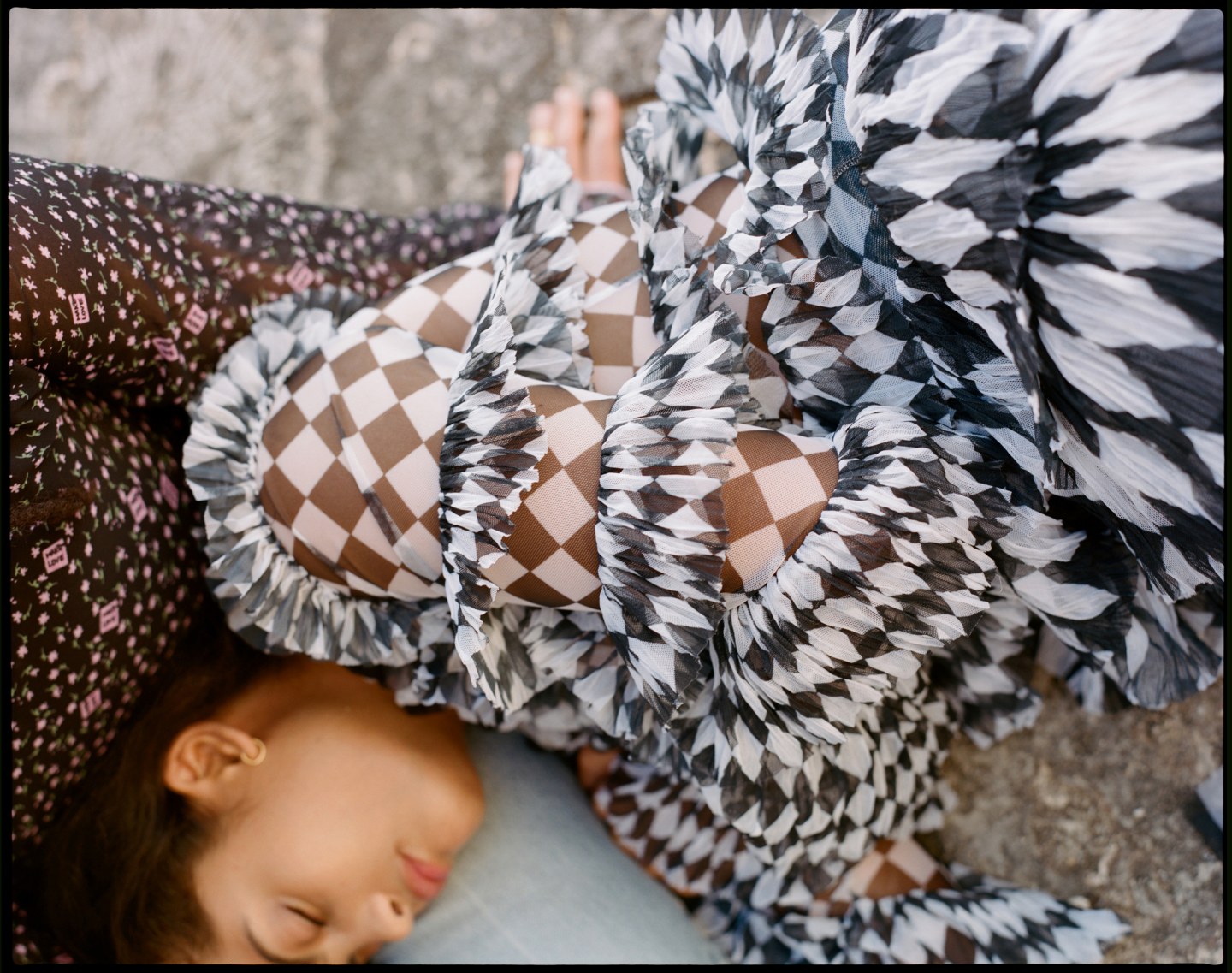 Lisa: dress SANDY LIANG, jeans OFF-WHITE c/o VIRGIL ABLOH
Naomi: dress OFF-WHITE c/o VIRGIL ABLOH, jeans (worn under) B SIDES
Lisa: dress SANDY LIANG, jeans OFF-WHITE c/o VIRGIL ABLOH
Naomi: dress OFF-WHITE c/o VIRGIL ABLOH, jeans (worn under) B SIDES
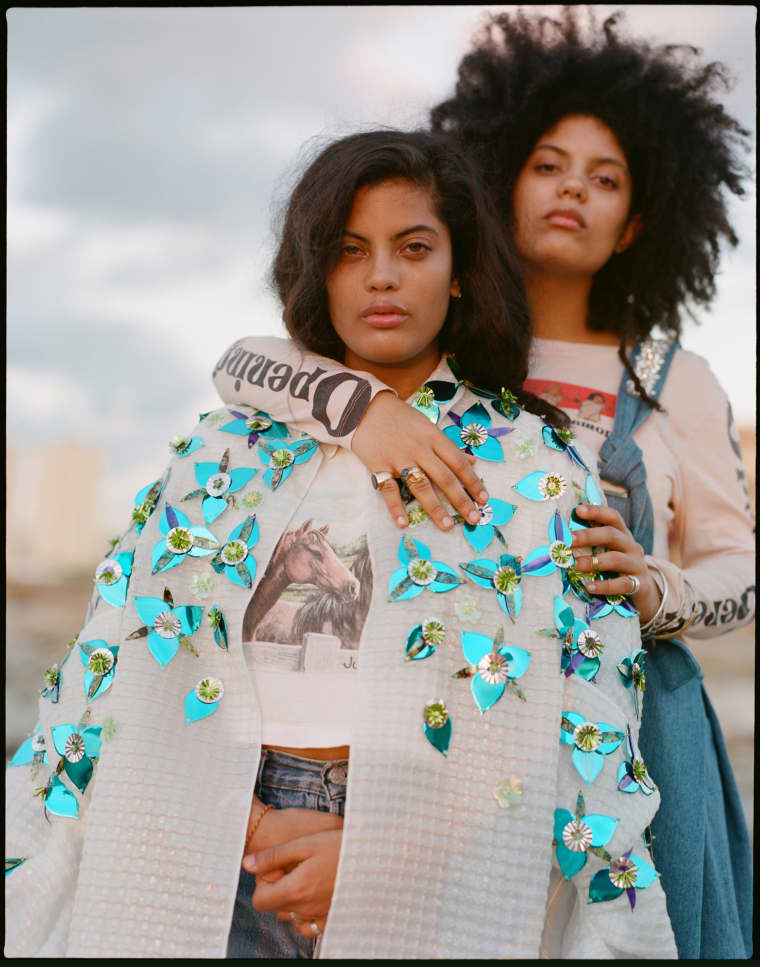 Naomi: jacket DELPOZO, shirt STYLIST’s OWN, jeans B SIDES
Lisa: overalls COLLINA STRADA, tee OPENING CEREMONY
Naomi: jacket DELPOZO, shirt STYLIST’s OWN, jeans B SIDES
Lisa: overalls COLLINA STRADA, tee OPENING CEREMONY

But both navigate Havana, and its people, with the same familiarity. They spent time in the country as toddlers, and have always had a family home here. Lisa remembers playing in the streets with their cousins until late at night, being watched over by one adult or the other. “Here, everybody knows each other. Havana is like a village,” says Naomi, sitting in the garden of a cozy rental house a few doors down from their new property. Three sweet little licky dogs toddle around, competing for attention with two wolf-whistling Bahamian parrots in a cage out back. Unripened mangoes from a large tree in the middle of the yard dot the grass, and mounted tropical air plants that would cost hundreds of dollars at hip florists in New York City circle the patio.
“You can say whatever you want about Cuba,” Naomi says. “But the people here are amazing with each other. I’m scared about it changing: capitalism is ‘everybody thinks about himself and not the others.’” (There are good shifts, though, too. “Three years ago, no one was wearing the afro,” Lisa says, squeezing at her hair. “Now, people are discovering their roots again.”)
Despite this aversion to Cuba squinting into the bright glow of global capitalism, Ibeyi share the belief that, more than anything, Cubans deserve the right to choose their fates. “My best friends here are really poor. We know how it is, we are with the people,” Naomi begins, before Lisa cuts in — they do this a lot — to elaborate: “People want [choice], you can’t choose for them.”
They often refer to the new house as an “investment.” Holding a financial stake in a slowly modernizing Havana is important because “Cuba represents our father,” Lisa tells me. “But it means something that with this [house], we are committed with the country.” For a family that’s lived abroad for so long, this rebuild is a tangible symbol of Ibeyi’s future connection to the island — a flexing of choice — made possible through a career creating experimental Yoruba soul.
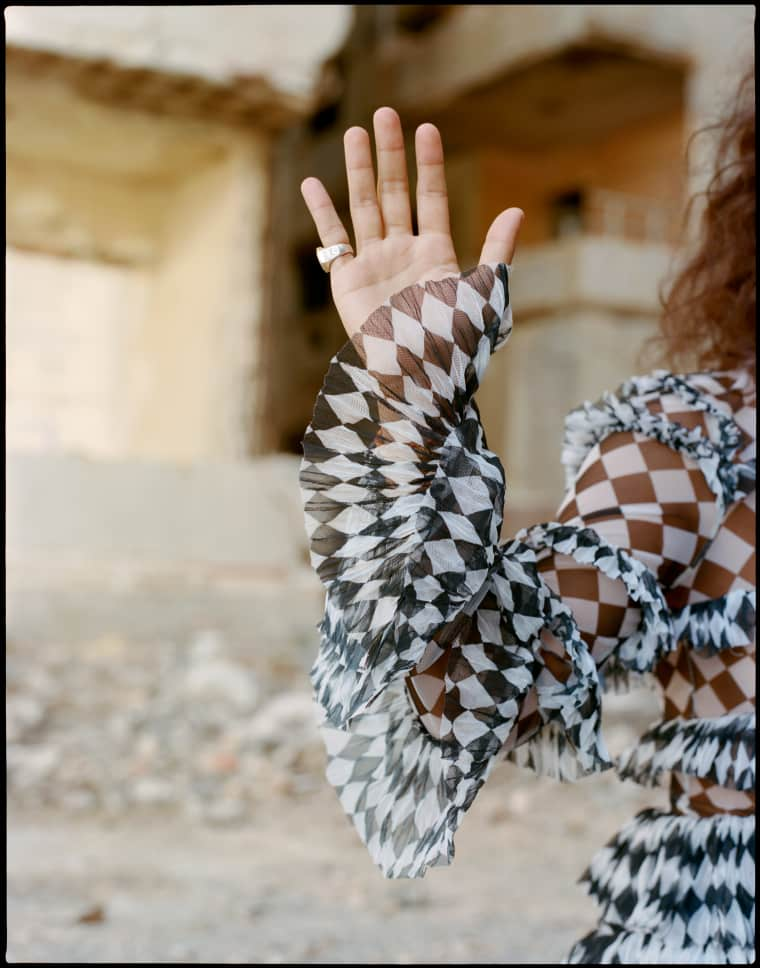 Dress OFF-WHITE c/o VIRGIL ABLOH
Dress OFF-WHITE c/o VIRGIL ABLOH
 Jacket FENDI
Jacket FENDI
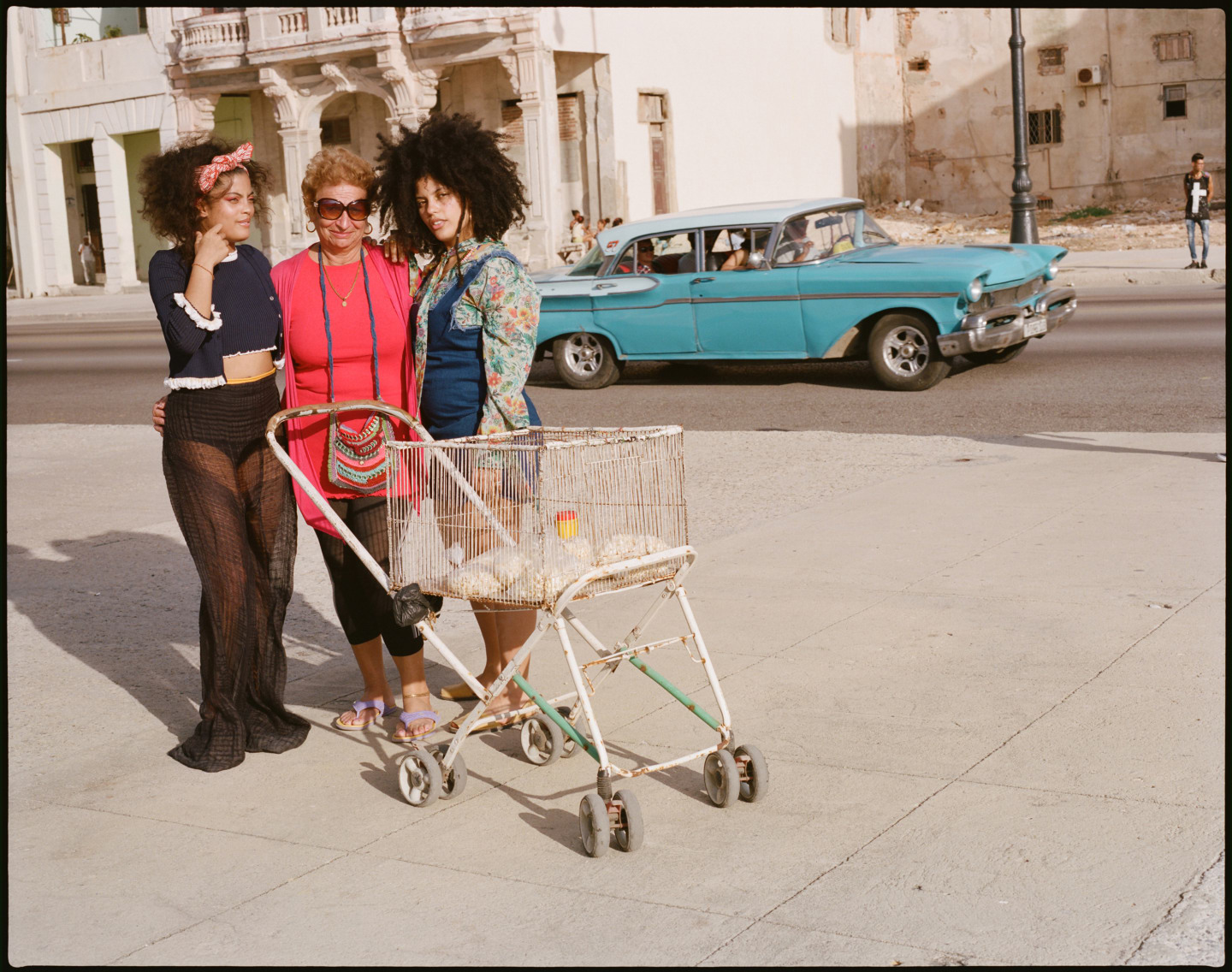 Naomi: scarf STYLIST’s OWN, top and cardigan, MARYAM NASSIR ZADEH, pants ACNE STUDIOS, swimsuit (worn as briefs) HER. THE LABEL
Lisa: top EDUN, overalls STYLIST’s OWN, avarcas PONS
Naomi: scarf STYLIST’s OWN, top and cardigan, MARYAM NASSIR ZADEH, pants ACNE STUDIOS, swimsuit (worn as briefs) HER. THE LABEL
Lisa: top EDUN, overalls STYLIST’s OWN, avarcas PONS
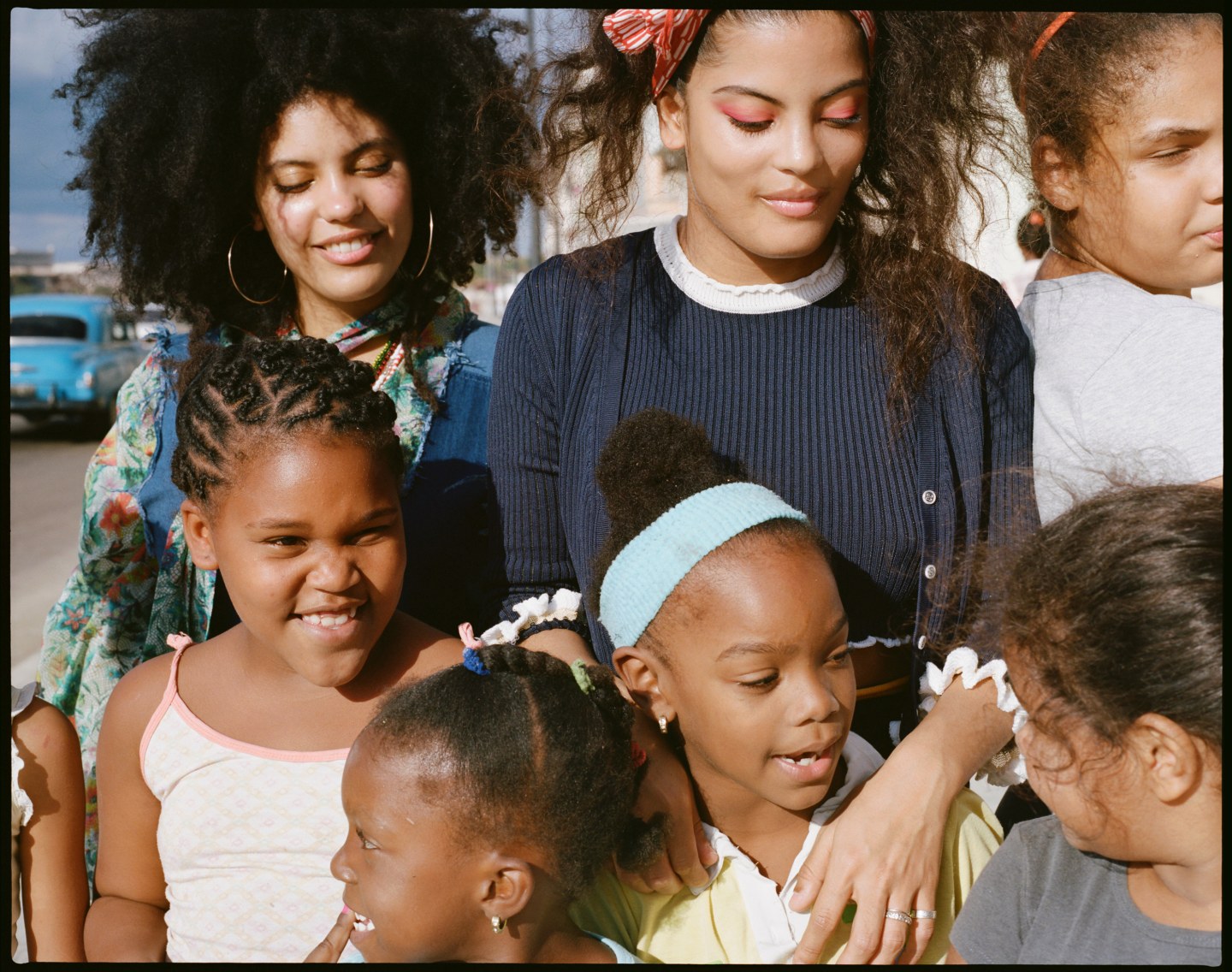 (Same as previous)
(Same as previous)
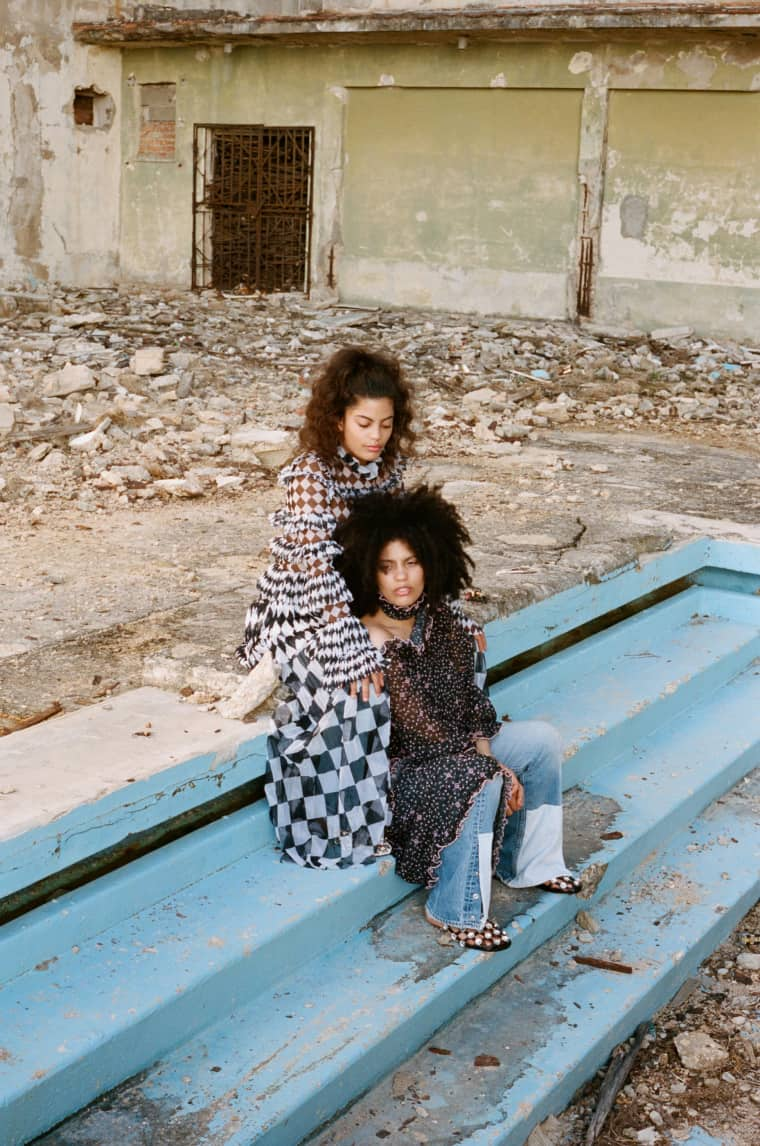 Naomi: dress OFF-WHITE c/o VIRGIL ABLOH, jeans (worn under) B SIDES, shoes ALEXANDER WANG
Lisa: Lisa: dress SANDY LIANG, jeans OFF-WHITE c/o VIRGIL ABLOH, shoes ALEXANDER WANG
Naomi: dress OFF-WHITE c/o VIRGIL ABLOH, jeans (worn under) B SIDES, shoes ALEXANDER WANG
Lisa: Lisa: dress SANDY LIANG, jeans OFF-WHITE c/o VIRGIL ABLOH, shoes ALEXANDER WANG
 Dress MULBERRY, yoruba beads NAOMI’S OWN
Dress MULBERRY, yoruba beads NAOMI’S OWN
Earlier that morning we’d listened to a rough mix of Ibeyi’s forthcoming second album. Like 2015’s self-titled release, the album is produced by Richard Russell, founder of their label XL Recordings, and features crystalline parallel harmonies and minimalist Latin percussion that Russell embellishes with drum machines and twinkling synth lines. Unlike their self-titled debut, which was filled with Yoruba chanting and held the ghosts of their late father, as well as their older sister, Yanira, who died of a brain aneurysm in 2013, the new album feels more playful, present, and much less gothic.
“Our first album was really emotional: it was our story, our baggage,” says Lisa, who speaks in a soft French cadence, flattened by the taut edges of time spent in London.
“All of the songs were written when Lisa was 14 to 18. We were really young but talking about grown subjects, like death,” adds Naomi, who is better in French than English. “This album is us now, in the moment. It’s less melancholic.”
“Our father died when we were 11, and we’d mourned through music, being with our family and talking about him — and it,” Lisa says. “I don’t feel we mourned,” Naomi interjects, then turns to me to clarify, “Well, it was not like a mourning process where everyone is screaming and crying.”
“But that was it! It was joyful,” Lisa shoots back. “And how did we mourn Yanira?” She directs this question to her sister. “We went on [a European] tour the next day. Every night, we dedicated the whole show to her. That is how we deal with it: we play for them. Death is hard when you push it away, because it comes back.”
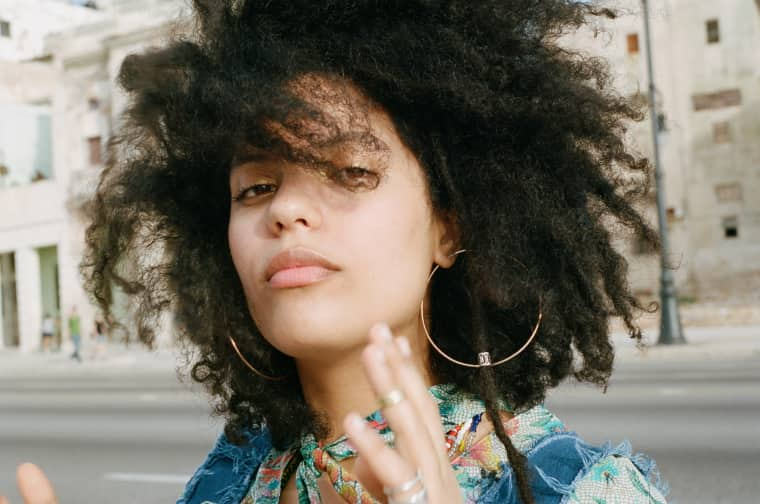 Top EDUN, overalls STYLIST’s OWN, jewelry LISA’S OWN
Top EDUN, overalls STYLIST’s OWN, jewelry LISA’S OWN
 Naomi: top OPENING CEREMONY, dress TATA NAKA, avarcas PONS
Lisa: dress M. MARTIN, pants OLIVIA VON HALLE, avarcas PONS
Naomi: top OPENING CEREMONY, dress TATA NAKA, avarcas PONS
Lisa: dress M. MARTIN, pants OLIVIA VON HALLE, avarcas PONS
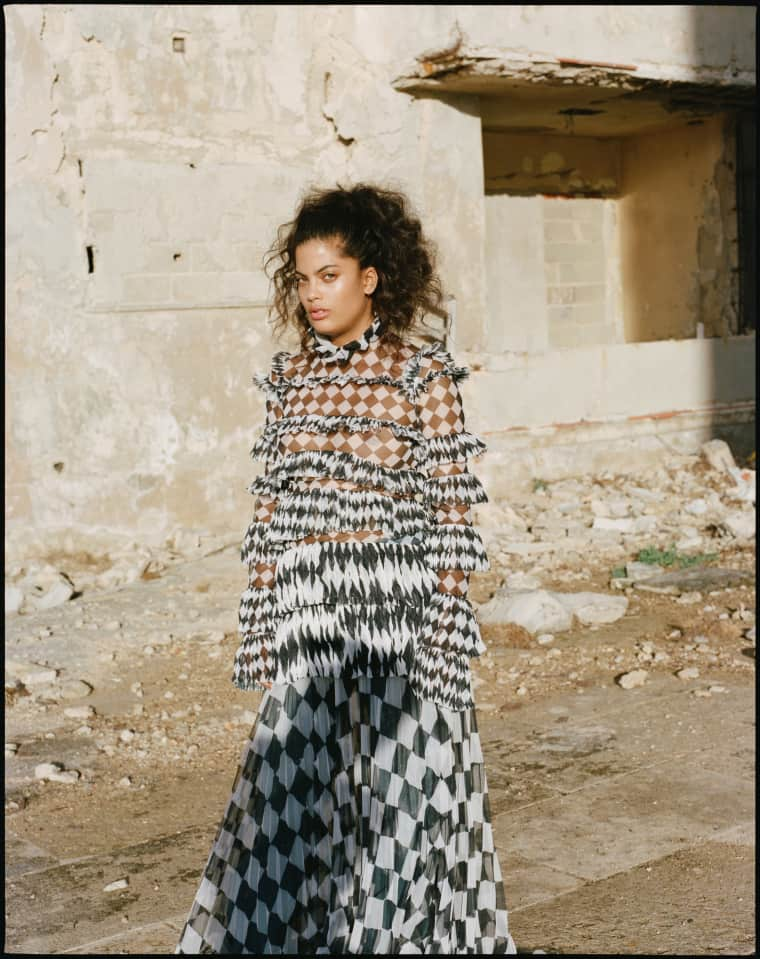 Dress OFF-WHITE c/o VIRGIL ABLOH, jeans (worn under) B SIDES
Dress OFF-WHITE c/o VIRGIL ABLOH, jeans (worn under) B SIDES
 Top EDUN, overalls STYLIST’s OWN, yoruba beads LISA’S OWN
Top EDUN, overalls STYLIST’s OWN, yoruba beads LISA’S OWN
 Dress APIECE APART
Dress APIECE APART
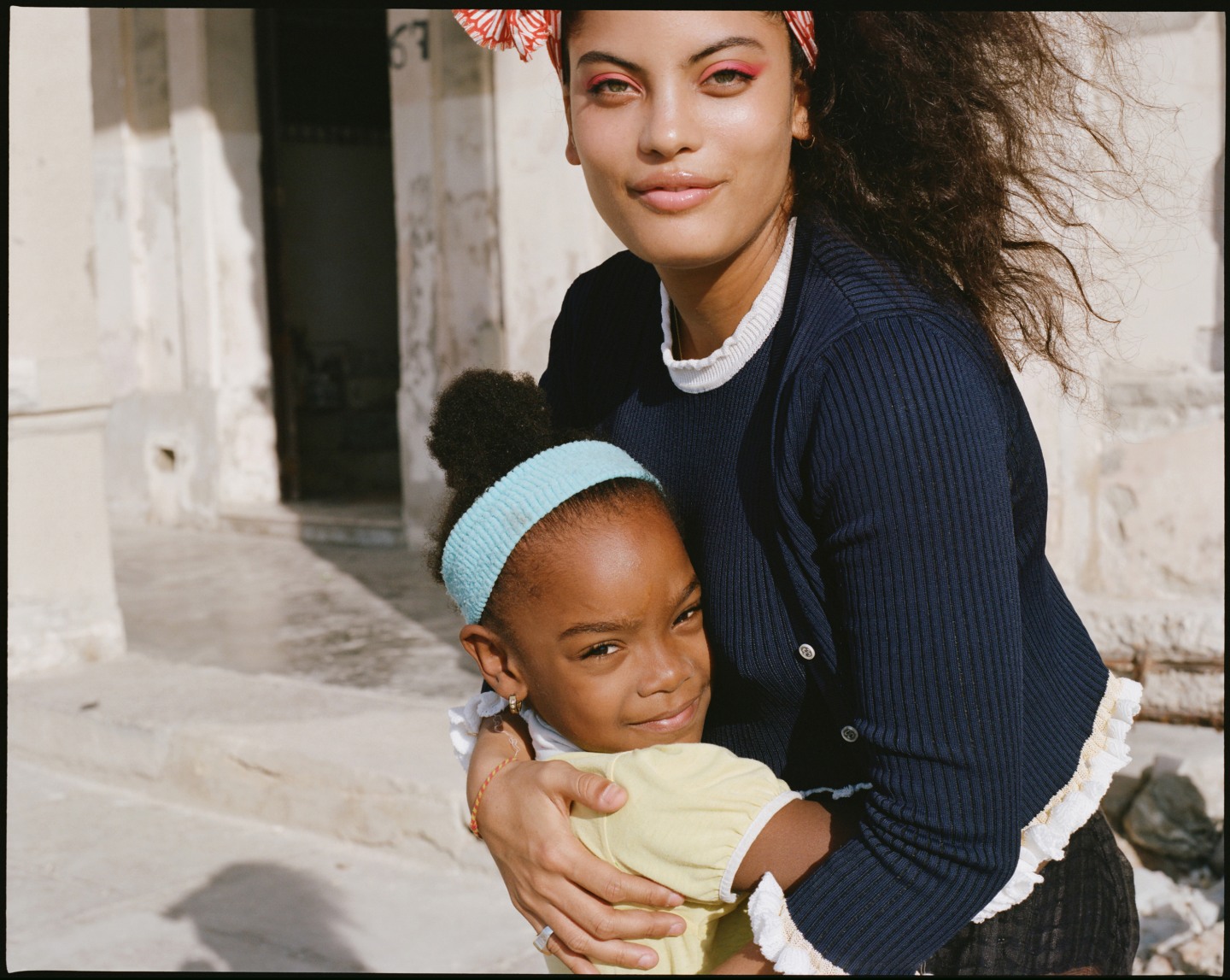 Scarf STYLIST’s OWN, top and cardigan, MARYAM NASSIR ZADEH, pants ACNE STUDIOS, swimsuit (worn as briefs) HER. THE LABEL
Scarf STYLIST’s OWN, top and cardigan, MARYAM NASSIR ZADEH, pants ACNE STUDIOS, swimsuit (worn as briefs) HER. THE LABEL
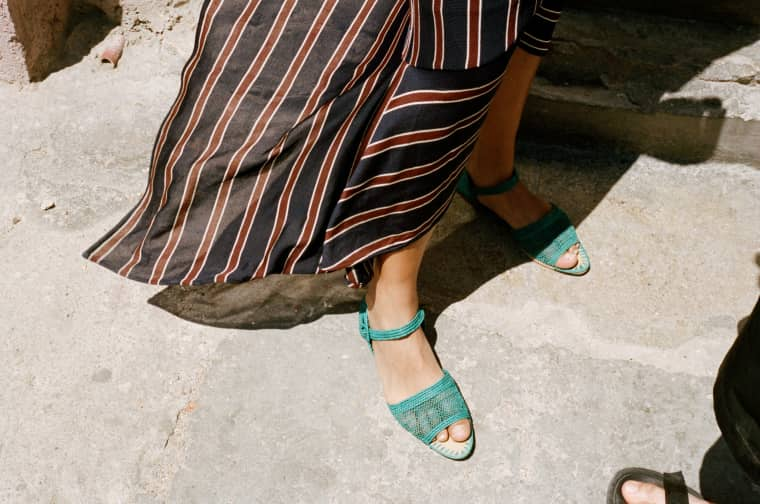 Dress MULBERRY, shoes PROUD MARY
Dress MULBERRY, shoes PROUD MARY
 Jumpsuit CHANEL, scarf STYLIST’s OWN
Jumpsuit CHANEL, scarf STYLIST’s OWN
The new album has two tracks explicitly dedicated to life: a lullaby for their 5-year-old niece, Yanira’s daughter, called “Vale,” as well as the shouty resistance anthem, “Deathless.” Feature credits include the mighty saxophonist Kamasi Washington, Canadian pianist Chilly Gonzales, Spanish rapper La Mala Rodriguez, and neo-soul legend Meshell Ndegeocello. The centerpiece is a near seven-minute suite called “Transmission,” which dips between heart-swelling choir vocals and a humid rumba. The song samples Claudia Rankine reading from her acclaimed 2014 dispatch Citizen: An American Lyric, as well as lines from Frida Kahlo’s diary, orated by Maya. Though the twins don’t identify as religious and aren’t initiated into the faith, Santería’s ideas of ancestry, humanity, and self-identity clearly steers Ibeyi’s songwriting, concerned equally with past, present, and future. The songs are laced with allegory to the orishas, and their new album closes with the same prayer to the god Elegua that the first record opened with.
Naomi and Lisa say that because the stories on Ibeyi were so intimate, they were surprised to find themselves with fists raised this time around. “The month we were making this album was pretty dark for the world,” says Lisa, referring to the late fall of 2016, and the election of Donald Trump. “And I desperately needed a song that would remind us that we are… deathless. This want we have of humans being together and loving each other, no matter what. This is what we have to carry.”
Naomi’s slouched in a chair. Without looking up, she adds: “Otherwise we will be dead. If you don’t dream, you’re dead.”
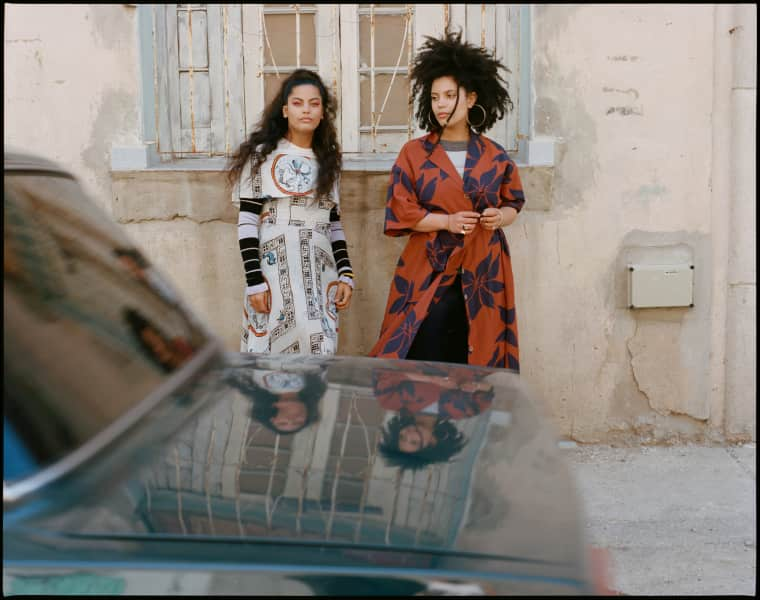 Naomi: top OPENING CEREMONY, dress TATA NAKA
Lisa: dress M. MARTIN, top, MISSONI, pants OLIVIA VON HALLE
Naomi: top OPENING CEREMONY, dress TATA NAKA
Lisa: dress M. MARTIN, top, MISSONI, pants OLIVIA VON HALLE
 Naomi: dress OFF-WHITE c/o VIRGIL ABLOH, jeans (worn under) B SIDES, shoes ALEXANDER WANG
Lisa: dress SANDY LIANG, jeans OFF-WHITE c/o VIRGIL ABLOH
Naomi: dress OFF-WHITE c/o VIRGIL ABLOH, jeans (worn under) B SIDES, shoes ALEXANDER WANG
Lisa: dress SANDY LIANG, jeans OFF-WHITE c/o VIRGIL ABLOH
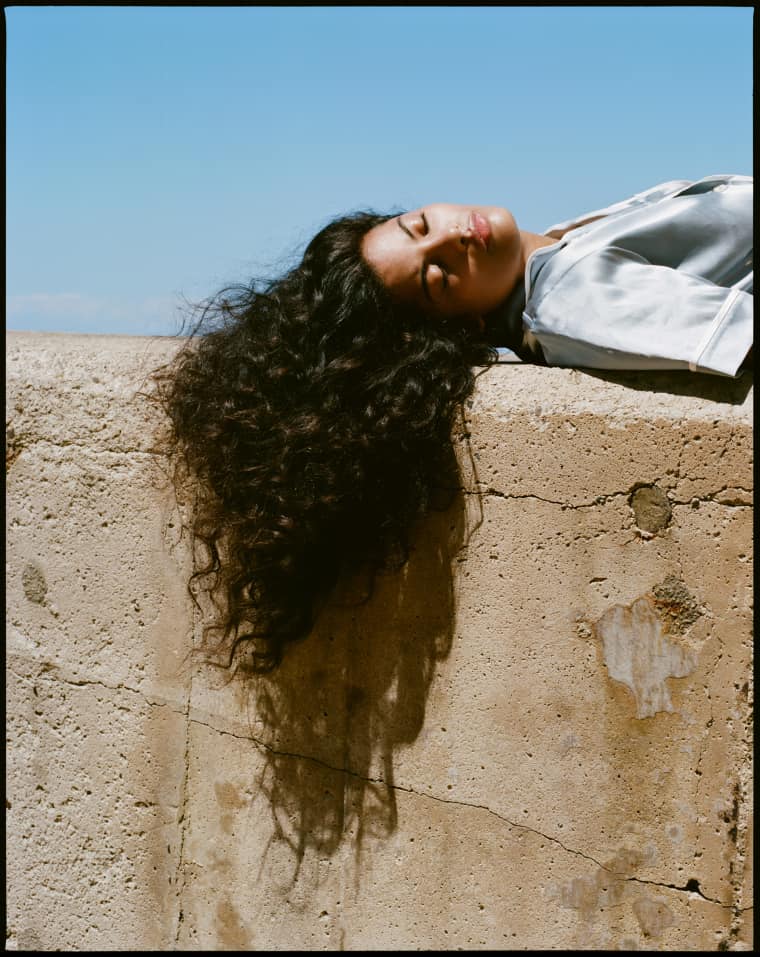 Top OLIVIA VON HALLE
Top OLIVIA VON HALLE
 Jacket FENDI
Jacket FENDI
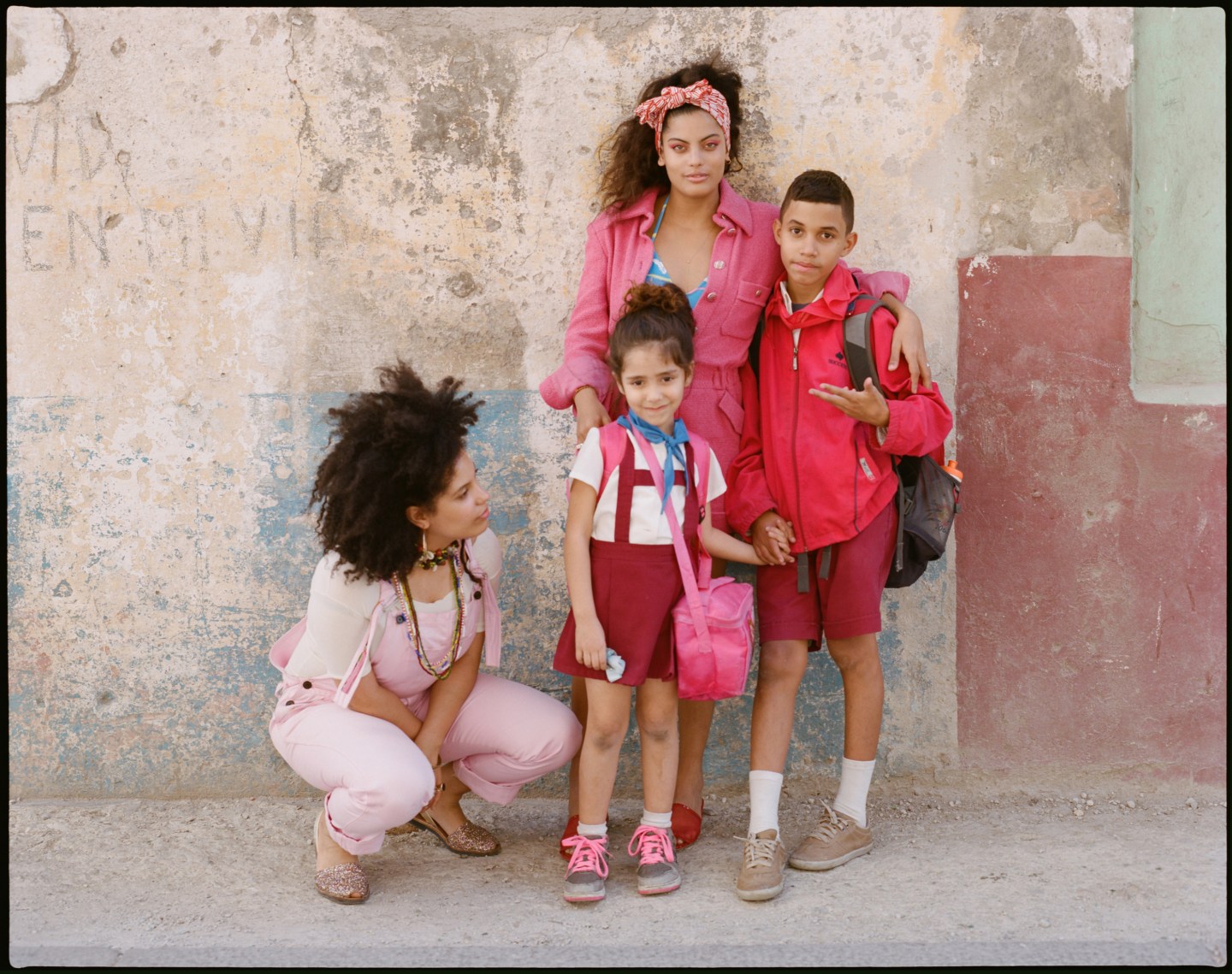 Lisa: top BASERANGE, overalls ATELIER BEAUREPAIRE, avarcas LISA’S OWN
Naomi: jumpsuit CHANEL, scarf STYLIST’s OWN, bathing suit WRAY, shoes MARYAM NASSIR ZADEH
Lisa: top BASERANGE, overalls ATELIER BEAUREPAIRE, avarcas LISA’S OWN
Naomi: jumpsuit CHANEL, scarf STYLIST’s OWN, bathing suit WRAY, shoes MARYAM NASSIR ZADEH
Oshun is the original mother of twins, which hold divine significance in Yoruba culture. Way before Beyoncé announced she was pregnant with twins, Lisa and Naomi had suspected that Oshun was the singer’s patron saint and that perhaps this was revealed when she and her husband visited Cuba in 2014. “Even before she wore the yellow dress in Lemonade,” Naomi says, referring to the deity’s token hue. Ibeyi appeared in the video project, but they talk about it, and Beyoncé, like fans. “You can tell: she’s the seductress, the queen, maternal,” Lisa says, gushing a little bit. “Her favorite song of ours is ‘River,’” Naomi points out. “And in Lemonade she’s surrounded by water.”
One evening, after spending the day shooting candids of her daughters on-set, Maya is sitting in an armchair in my rented bedroom charging her iPhone. She starts to tell me about her path to Cuba, which began when she discovered Yoruba music and the quasi-ceremonial batá drum at 18, back in France. Later, after falling in love with Anga, the couple came to Cuba and went through the intense Santería initiation process — while Maya was pregnant with the twins. “It was so, so long, and hard. Really hard,” she says, her face collapsing into a red stain. She starts to cry, but keeps talking between gulps of air. Part of the initiation is quite brutal and violent, she explains, clenching her fists and raising her chest. “This wasn’t my country and I was scared, but I felt that going through [the initiation] with Anga was the deepest way to understand Cuba, its ancestors, and Anga himself. It was the deepest love proof I could give to him and his country.” As quickly as she crumbles, Maya recovers. It was all worth it, she says smiling, when her orisha was divined as Oshun Ibu Aña, the mother of twins, “who owns and goes toward the drums.”
Part of Ibeyi’s appeal is Santería’s influence on their music, and how it directly links Cuban culture to West Africa. Aesthetically, the project of siblings remixing and recontextualizing ancestral sounds and rhythms reminds me of the diasporic souljazz developed by Afro-Parisian sisters Les Nubians in the late ’90s and early aughts. “Cuban music is Yoruba music,” says Lisa, emphasizing the generational absorption of African indigenous practices into mainstream Cuba. But Ibeyi’s love for Yoruba music came just a few years before they began to record it themselves.
In Paris, the twins grew up listening to Mozart, jazz, their father’s drumming with Buena Vista Social Club and Irakere, and Maya’s Mos Def and Eminem CDs. When they were 15, Maya asked them to join her at a group of Parisians that practiced batá drumming and Yoruba chants. “The first time we went, we were like, ‘Aww, we don’t wanna go to a choir on Friday, why is she doing that to us?’” says Naomi. “And then, the second we heard the music, it was mind-blowing.” They’d go each week and, Lisa says, began to learn the liturgical music of Santería.
But, Naomi reminds me, “We wouldn’t be what we are if we didn’t grow up in France.” Outside music is only slowly trickling into Cuba via the lucky few citizens granted access to travel, and visiting ex-pats. And because wifi is hard to come by, people get music — mostly Cuban reggaeton — and other media, including American TV shows like Grey’s Anatomy, via black market paquetes: curated data distributed via thumb drives for a few dollars. This is how Ibeyi’s music, specifically the 2015 video for “River,” finally reached Cuba, Maya explains, adding that last September she paid a paquete dealer for three months of promo. By the end of November, “River” was nominated in three categories, including Best New Artist, at Cuba’s annual Premios Lucás video music awards.
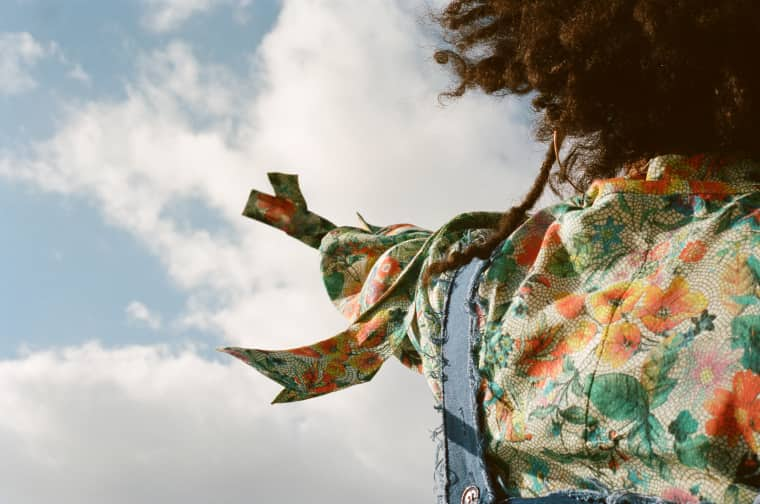 Top EDUN, overalls STYLIST’s OWN
Top EDUN, overalls STYLIST’s OWN
 Dress OFF-WHITE c/o VIRGIL ABLOH, jewelry NAOMI’S OWN
Dress OFF-WHITE c/o VIRGIL ABLOH, jewelry NAOMI’S OWN
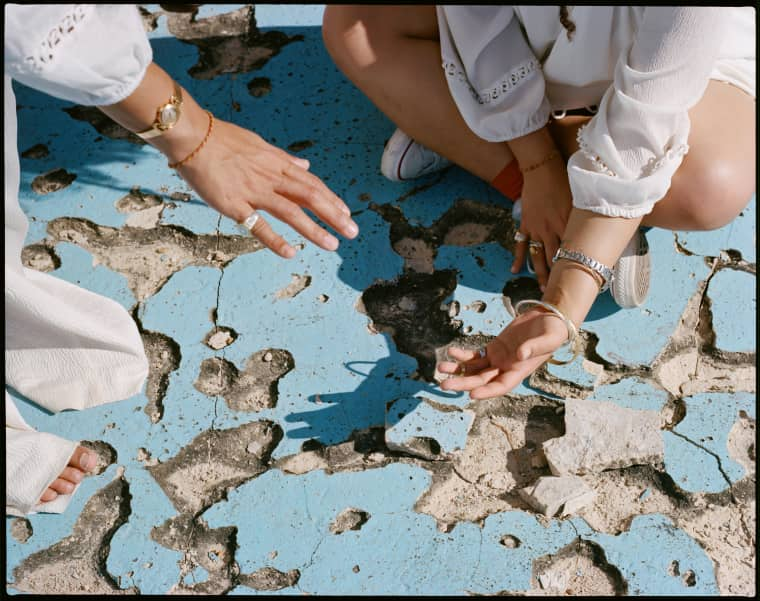 Naomi: Top APIECE APART
Lisa: Dress APIECE APART, socks LISA’s OWN shoes CONVERSE
Naomi: Top APIECE APART
Lisa: Dress APIECE APART, socks LISA’s OWN shoes CONVERSE
 Naomi: dress OFF-WHITE c/o VIRGIL ABLOH, jeans (worn under) B SIDES
Lisa: dress SANDY LIANG
Naomi: dress OFF-WHITE c/o VIRGIL ABLOH, jeans (worn under) B SIDES
Lisa: dress SANDY LIANG
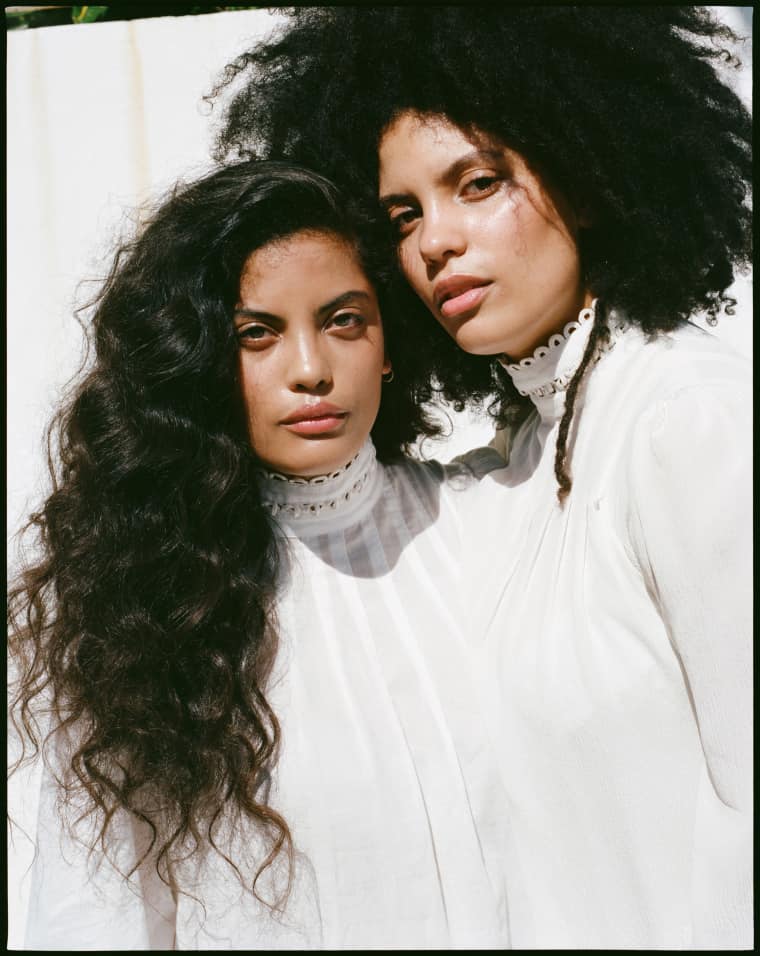 Naomi: Top APIECE APART
Lisa: Dress APIECE APART
Naomi: Top APIECE APART
Lisa: Dress APIECE APART
 Naomi: jacket DELPOZO, shirt STYLIST’s OWN, jeans B SIDES, shoes PROUD MARY
Lisa: overalls COLLINA STRADA, tee OPENING CEREMONY, shoes CONVERSE
Naomi: jacket DELPOZO, shirt STYLIST’s OWN, jeans B SIDES, shoes PROUD MARY
Lisa: overalls COLLINA STRADA, tee OPENING CEREMONY, shoes CONVERSE
On the day we see the new house and listen to the new album, we also go for a drive. Between torrential sunshowers, six of us pile into a rickety red vintage car and drive east along Cuba’s famed Malecón toward Central Havana. One side of the seven-kilometer esplanade is lined with retrograde hotels and restaurants, and we pass by the newly reopened U.S. embassy. On the other side is a stone-laid seawall where tourists, skaters, smooching teenagers, and old couples look out onto the quiet expanse of the Gulf of Mexico. About halfway along the route, the driver pulls over. There’s a black and white mural of Naomi, about 12-feet high, on the side wall of a roof. Street art is everywhere in Havana. “It was painted by a Cuban-American artist [named Abstrk] from Miami,” Naomi says nonchalantly, although she’s obviously pleased. Her sister snaps iPhone photos from the front seat. “He says he will come back to paint Lisa.”
I mention the mural to Lisa a couple of days later and she says she always responds with the same joke when people ask: “There’s a humongous wall there; it’s not like there’s no space! Why didn’t you do me too?” We’re back in the garden of the rental house, beneath a trellis veiled in pink flowers. She glances toward the house, where Naomi is getting her makeup done and listening to Robert Glasper. “To be fair, I really don’t care. I love that they did that, and that she’s looking out at the sea. I’m the daughter of Yemaya, the daughter of the sea — and she’s looking at me.”
HAIR BY PETER MATTELIANO AT ARTS BY TIMOTHY PRIANO, MAKEUP BY ERIN GREEN AT ART DEPARTMENT. SPECIAL THANKS: PRODUCTION: MAYA DAGNINO, NIKKI BENNETT, JON MAHONEY, CHRIS MCFARLAND; LOCATIONS: JOSEPH ROS; TALENT: FELIX PALMERO